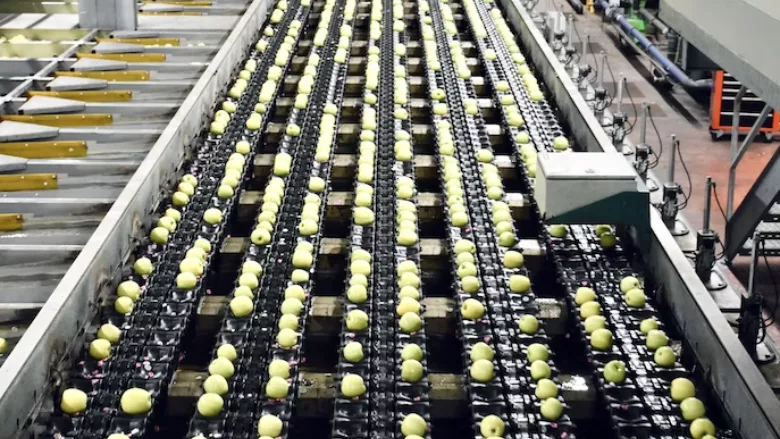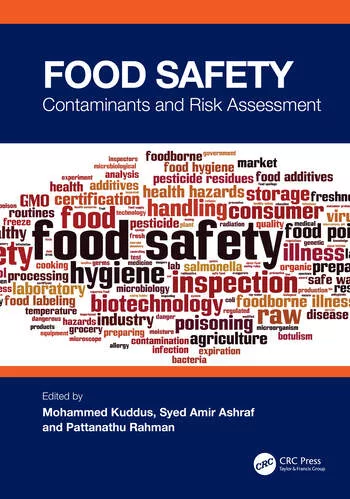Key Food Safety Takeaways from IFT FIRST

Credit: Arno Senoner via Unsplash
The Institute of Food Technologists' (IFT's) annual event, IFT FIRST: Annual Event and Expo, returned in person in July in Chicago. Over 15,000 food industry professionals gathered to connect, learn, innovate, and discuss critical areas in the science of the food industry. From topics and issues surrounding supply chain disruption and innovation to data standards and contaminants, outlined below are crucial insights and takeaways impacting food safety.
Supplier Management is Critical to Ensure Safety, Quality, Legality of Food
Over the past few years, the widespread impacts of supply chain disruption have resulted in unprecedented food safety challenges. Companies are tasked with finding new suppliers that come with emerging and unknown risks, often on short notice. These shortages and opaque supply chains increase the risk of food fraud.
An established process for evaluating and addressing food safety, quality, and regulatory risks must become integral to supply chain management. "It's knowing your supplier. It's things as simple as not letting stores source on their own, having corporate programs for supplier approval, and making sure there is a vetting process," said Hilary Thesmar, Chief Security Officer and Senior Vice President of Food Safety Programs at Food Marketing Institute, during a panel discussion on recalls and outbreak response.
Indemnity agreements and contracts between supply chain actors are not enough to ensure the safety or legality of high-risk ingredients. Understanding each step of a food product's journey and building relationships between actors at each stage of the supply chain must be a priority.
Innovation Outpaces Regulation
The wide array of novel, plant-based ingredients and technologies illustrates the food industry's fast pace of innovation. Keeping up with novel food ingredients and processes is just one part of our regulatory agencies' multi-faceted mission of maintaining a safe food supply. Due to funding changes and diminished resources, regulatory oversight and enforcement have been unable to keep pace with innovation. This results in a reactive environment where significant action is often initiated only after a dangerous food safety incident involving novel foods. The recent illnesses, recalls, and subsequent investigation into the safety of tara flour illustrate the impact of a reactive environment in which food safety incidents become the catalyst for change. The impacts are felt throughout the food chain with consumers suffering from foodborne illness, manufacturers feeling fallouts associated with recalls, and regulatory agencies facing accusations of ineffective regulation.
Looking for quick answers on food safety topics?
Try Ask FSM, our new smart AI search tool.
Ask FSM →
As new ingredients and processes are developed, industry-led, public-private collaboration is needed to support the regulatory system and proactively manage the food safety risks that accompany innovation.
Data Standards, Interoperability Have an Important Role
Since food safety is such a data-driven discipline, data standards and interoperability have a big role to play in the future of food safety. Interoperability refers to digital systems' ability to exchange and make use of information. Data standards enable interoperability, and for systems to seamlessly share and interpret data there must be standardized data formats and methods of communication.
Data sharing is essential for quick and efficient recalls, outbreak investigations, and continuous improvement in the food safety space. However, in the current landscape, recalls are slowed by disjointed or nonexistent product movement data. Meanwhile, regulatory sampling and foodborne illness occurrence data sets that are difficult to connect can impede outbreak investigations. Lastly, siloed data sets inhibit trend identification.
Although lack of trust is frequently cited as one of the largest barriers to data sharing, incompatible data formats and systems provide an equally challenging barrier. To take advantage of the opportunities provided by better data, the science of food industry must prioritize data standardization and interoperability.
Chemicals and Contaminants Remain a Regulatory Focus
Recalls and shortages due to heavy metals have plagued the food industry over the past year and put chemical contamination in the spotlight.
In a session dedicated to chemicals and contaminants, Dr. Susan Mayne, FDA's Director for the Center for Food Safety and Applied Nutrition (CFSAN), spoke about the Closer to Zero initiative, outlining FDA's commitment to addressing toxic elements in the food supply. FDA plans to leverage research and stakeholder input to establish action levels for toxic elements in foods commonly consumed by infants and young children. Industry actors will be encouraged to implement best practices to lower levels of toxic elements in food products, and FDA will monitor the levels of toxic elements in food over time.
Editorial note: For more information on FDA's Closer to Zero initiative, listen to the Food Safety Matters podcast interview with Dr. Conrad Choiniere, Director of the Office of Analytics and Outreach at FDA's CFSAN and head of FDA's Toxic Elements Working Group.
A Conclusive Call for Collaboration
Each of these issues highlight a common call to action: collaboration. Ongoing collaboration within and between industry actors and regulatory agencies is fundamental to ensuring a safe and wholesome food supply.
Relationships between supply chain actors support food safety initiatives in procurement. Public-private partnership efforts are needed to ensure that regulations keep pace with innovation. Data sharing requires widespread participation and trust. The reduction of chemical contamination in our food supply will require an industry-wide collaborative effort. As the global food supply chain grows and changes, stakeholders from across the industry must work together to improve food safety worldwide.









